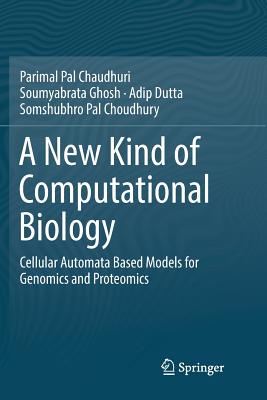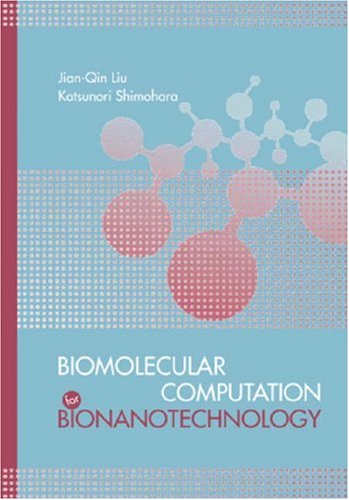A New Kind of Computational Biology: Cellular Automata Based Models for Genomics and Proteomics
暫譯: 新型計算生物學:基於細胞自動機的基因組與蛋白質組模型
Parimal Pal Chaudhuri, Soumyabrata Ghosh, Adip Dutta, Somshubhro Pal Choudhury
- 出版商: Springer
- 出版日期: 2018-10-06
- 售價: $3,340
- 貴賓價: 9.5 折 $3,173
- 語言: 英文
- 頁數: 335
- 裝訂: Hardcover
- ISBN: 9811316384
- ISBN-13: 9789811316388
-
相關分類:
生物資訊 Bioinformatics
海外代購書籍(需單獨結帳)
相關主題
商品描述
This book reflects more than three decades of research on Cellular Automata (CA), and nearly a decade of work on the application of CA to model biological strings, which forms the foundation of 'A New Kind of Computational Biology' pioneered by the start-up, CARLBio. After a brief introduction on Cellular Automata (CA) theory and functional biology, it reports on the modeling of basic biological strings with CA, starting with the basic nucleotides leading to codon and anti-codon CA models. It derives a more involved CA model of DNA, RNA, the entire translation process for amino acid formation and the evolution of protein to its unique structure and function. In subsequent chapters the interaction of Proteins with other bio-molecules is also modeled. The only prior knowledge assumed necessary is an undergraduate knowledge of computer programming and biology.
The book adopts a hands-on, “do-it-yourself” approach to enable readers to apply the method provided to derive the CA rules and comprehend how these are related to the physical ‘rules’ observed in biology. In a single framework, the authors have presented two branches of science – Computation and Biology. Instead of rigorous molecular dynamics modeling, which the authors describe as a Bottoms-Up model, or relying on the Top-Down new age Artificial Intelligence (AI) and Machine Language (ML) that depends on extensive availability of quality data, this book takes the best from both the Top-Down and Bottoms-up approaches and establishes how the behavior of complex molecules is represented in CA. The CA rules are derived from the basic knowledge of molecular interaction and construction observed in biological world but mapped to a few subset of known results to derive and predict results.This book is useful for students, researchers and industry practitioners who want to explore modeling and simulation of the physical world complex systems from a different perspective. It raises the inevitable the question – ‘Are life and the universe nothing but a collection of continuous systems processing information’.
商品描述(中文翻譯)
這本書反映了超過三十年的細胞自動機(Cellular Automata, CA)研究,以及近十年將CA應用於生物序列建模的工作,這為初創公司CARLBio所開創的「新型計算生物學」奠定了基礎。在簡要介紹細胞自動機(CA)理論和功能生物學後,本書報告了使用CA對基本生物序列的建模,從基本的核苷酸開始,進而形成密碼子(codon)和反密碼子(anti-codon)CA模型。它推導出一個更為複雜的CA模型,涵蓋DNA、RNA、氨基酸形成的整個翻譯過程,以及蛋白質的演化及其獨特結構和功能。在隨後的章節中,蛋白質與其他生物分子的相互作用也被建模。唯一假設的先備知識是本科階段的計算機編程和生物學知識。
本書採用實作型的「自己動手」方法,使讀者能夠應用所提供的方法推導CA規則,並理解這些規則如何與生物學中觀察到的物理「規則」相關聯。在單一框架中,作者呈現了計算和生物學兩個科學分支。這本書並未採用嚴謹的分子動力學建模,作者將其描述為自下而上的模型,也不依賴於依賴大量高質量數據的新時代人工智慧(Artificial Intelligence, AI)和機器學習(Machine Language, ML)的自上而下方法,而是從自上而下和自下而上的方法中取其精華,建立複雜分子的行為如何在CA中表示。CA規則是從生物世界中觀察到的分子相互作用和構造的基本知識推導而來,但映射到少數已知結果的子集上以推導和預測結果。
這本書對於希望從不同角度探索物理世界複雜系統建模和模擬的學生、研究人員和行業從業者非常有用。它提出了一個不可避免的問題——「生命和宇宙是否僅僅是處理信息的連續系統的集合」。












